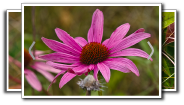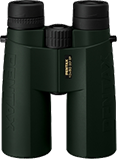retrorse sedge
(Carex retrorsa)
Conservation • Wetland • Description • Habitat • Ecology • Use • Distribution • Taxonomy
Description |
Retrorse sedge is a common, native, true sedge. It occurs across the northern United States and southern Canada, generally between the 40th and 53rd parallels north latitude, but it is mostly absent from the Great Plains. In Minnesota it is fairly common and widespread but not abundant. It is found in sedge meadows, marshes, swamps, and wet thickets; on the shores of streams, ponds, and lakes; and in ditches. It grows under both sun and shade, in wet soil but not in peat. Retrorse sedge is an erect, perennial sedge that rises in a clump from a horizontal, underground stem (rhizome) and fibrous roots. The rhizome is very short, sometimes too short to be recognized. Multiple stems are densely clustered on the very short rhizome. The stems are erect, 4″ to 42″ (10 to 105 cm) tall, sharply triangular in cross section, and smooth near the top. Basal and stem leaves are produced. The leaf sheath, the lower part of the leaf that wraps around the stem, is dark brown to dark reddish brown at its base. The adaxial (ventral or inner) side of the sheath is membranous. As the sheath ages and breaks down, it develops numerous prominent vertical fibers and a sparse scattering of horizontal fibers, which is described as weakly ladder-fibrillose. There is a narrow membranous outgrowth (ligule) at the junction of the blade and the sheath. The ligule is as wide as long. The leaf blade is flat to W-shaped, hairless, and cross-veined. The widest blades are ⅛″ to 5⁄16″ (4 to 8 mm) wide. The inflorescence is a 1¼″ to 8″ (3 to 20 cm) long or longer, unbranched array (raceme) of flowering spikes at the end of the culm. It consists of usually 1, sometimes 2 or 3 male (staminate) spikes at the tip of the culm above 3 to 7 female (pistillate) spikes. Subtending the inflorescence there is a single, 7½″ to 27½″ (19 to 70 cm) long, sometimes longer, modified leaf (bract). The bract is usually 3 to 9 times longer than the inflorescence. The staminate spike is ⅝″ to 2⅜″ (1.5 to 6.0 cm) long. It is not elevated above or is only slightly elevated above the tops of the pistillate spikes. The pistillate spike is cylindrical, ascending, and ¾″ to 2¼″ (12.0 to 5.5 cm) long. The uppermost spike is erect, the others are ascending to spreading. The lowest spike may be well separated from the rest and be on a stalk up to 1¼″ (3 cm) long. Each pistillate spike has 20 to 120 or more flowers, and each flower is surrounded by a modified bract (perigynium). The uppermost perigynia are widely spreading, the middle and lower ones are often bent downward. The perigynia is egg-shaped, ¼″ to ⅜″ (6.5 to 10.0 mm) long, and 1⁄16″to ⅛″ (2 to 4 mm) wide. It is tapered at the end to a slender, two-toothed, 1⁄16″ to ⅛″ (2 to 4 mm) long beak. The teeth are straight and 1⁄64″ to 1⁄32″ (0.3 to 1.1 mm) long. The perigynia surface is hairless and has 6 to 13 strong veins running into the beak. The fruit is a dry seed capsule (achene). The achene is pale brown, smooth, and triangular in cross section. It matures in mid-June to early September. |
Height |
4″ to 42″ (10 to 105 cm) |
Similar Species |
Habitat |
Wet. Sedge meadows, marshes, swamps, wet thickets, and the shores of streams, ponds, and lakes. Sun or shade, Wet soil. |
Ecology |
Maturing |
Mid-June to early September |
Pests and Diseases |
|
Use |
|
Distribution |
||
|
Sources |
|
| 4/5/2025 | ||
Nativity |
||
Native |
||
Occurrence |
||
Common |
||
Taxonomy |
|
Kingdom |
|
| Division |
Tracheophyta (Vascular Plants) |
Subdivision |
Spermatophytina (Seed Plants) |
Class |
Liliopsida (Monocots) |
Order |
Poales (grasses, sedges, cattails, and allies) |
Family |
Cyperaceae (sedges) |
Subfamily |
Cyperoideae |
Tribe |
Cariceae |
Genus |
Carex (true sedges) |
Subgenus |
Carex |
Section |
Vesicariae |
Subordinate Taxa |
|
|
|
Synonyms |
|
Carex lupulina var. gigantoidea Carex lupulina var. gigantoides Carex retrorsa var. gigantoidea Carex retrorsa var. gigantoides Carex retrorsa var. multispicula Carex retrorsa var. robinsonii Carex reversa |
|
Common Names |
|
knotsheath sedge knot-sheath sedge retrorse sedge |
|
Glossary
Achene
A dry, one-chambered, single-seeded seed capsule, formed from a single carpel, with the seed attached to the membranous outer layer (wall) only by the seed stalk; the wall, formed entirely from the wall of the superior ovary, does not split open at maturity, but relies on decay or predation to release the contents.
Beak
In plants: A comparatively short and stout, narrow or prolonged tip on a thickened organ, as on some fruits and seeds. In insects: The protruding, tubular mouthpart of a sucking insect.
Bract
Modified leaf at the base of a flower stalk, flower cluster, or inflorescence.
Culm
The hollow or pithy stem of a grass, sedge, or rush.
Ligule
In grasses and sedges, an outgrowth on the leaf at the junction of the blade and the sheath, usually membranous, sometimes no more than a fringe of hairs. In flowering plants, the ligule is the flat, strap-shaped, petal-like portion of the corolla of a ray floret.
Perigynium
In Carex and other closely related sedges, a sac-like or flask-shaped, highly modified bract that surrounds the pistillate flower and later encloses the achene. Plural: perigynia.
Pistillate
Referring to a flower that has a female reproductive organ (pistil) but does not have male reproductive organs (stamens).
Raceme
An unbranched, elongated inflorescence with stalked flowers. The flowers mature from the bottom up.
Rhizome
A horizontal, usually underground stem. It serves as a reproductive structure, producing roots below and shoots above at the nodes.
Sheath
The lower part of the leaf that surrounds the stem.
Staminate
Referring to a flower that has a male reproductive organs (stamens) but does not have a female reproductive organ (pistil).
Visitor Photos |
||
Share your photo of this plant. |
||
This button not working for you? |
||
Alfredo Colon |
 |
MinnesotaSeasons.com Photos |
||
|
||
|
||

Slideshows |
Carex retrorsa - knotsheath sedge |
 |
About
Knotsheath sedge is a rhizomatous perennial with stems mostly 30-70 cm tall. Of the sedges with flowers having 3 style branches and 3-angled achenes, Knotsheath sedge has perigynia long beak 3-5 mm long that are spreading to reflexed at least at the lower nodes of the spike (or spikelet). The pergynia body is inflated and measures 6-10 mm long. Common at lower elevations in wetland and riparian settings. |

Visitor Videos |
||
Share your video of this plant. |
||
This button not working for you? |
||
|
Other Videos |
||
|

|
Created: 4/5/2025 Last Updated: © MinnesotaSeasons.com. All rights reserved. |


